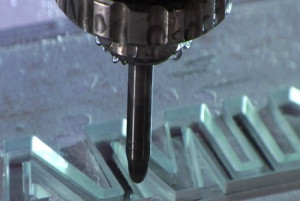
Demystifying 5 Axis Waterjet Price: Your Complete Investment Guide (2025)
The precision, versatility, and efficiency of 5-axis waterjet cutting are revolutionizing industries from aerospace to artistic fabrication. But for businesses considering this powerful technology, the immediate question is invariably: “What is the 5 axis waterjet price?” The answer, unfortunately, isn’t a single number. The cost of a 5-axis waterjet system represents a significant investment, influenced by a complex interplay of factors. Understanding these variables is crucial for making an informed decision that aligns with your production needs and budget. This comprehensive guide breaks down the 5 axis waterjet price landscape, exploring the key elements that determine cost, helping you navigate your purchasing journey beyond just the initial sticker shock.
1. The Core Machine: Base Price and Configuration (The Biggest Chunk)
The foundation of your 5 axis waterjet price is the machine itself. This is typically the largest single expense and varies dramatically:
Machine Size (Cutting Envelope): This is paramount. A compact 5-axis system designed for intricate, smaller parts will cost significantly less than a massive machine built for cutting large turbine blades or marine components. Expect prices to scale considerably with X, Y, and Z travel distances.
Pump Power (HP/MPa): The heart of the system. Higher horsepower (e.g., 50 HP, 60 HP, 100 HP) or pressure (e.g., 60,000 PSI / 4140 bar, 87,000 PSI / 6000 bar) pumps cost more but enable faster cutting speeds, especially on thicker or harder materials, impacting throughput and long-term ROI. Direct drive pumps generally command a premium over intensifier pumps but offer advantages in noise and efficiency.
Machine Structure & Rigidity: Precision 5-axis cutting demands exceptional stability. Machines built with heavy-duty frames, high-quality linear guides, robust bearings, and vibration-damping components cost more but deliver superior accuracy, repeatability, and longevity, protecting your investment.
Control System & Software: Advanced CNC controls (like Siemens, Fanuc, or proprietary high-end systems) and sophisticated CAD/CAM software packages tailored for complex 5-axis toolpath generation add substantial value and cost. User-friendly interfaces, simulation capabilities, and seamless integration impact productivity and ease of use.
Basic vs. Advanced Features: Entry-level 5-axis machines offer core functionality. Premium models include features like automatic tool changers for different orifice/nozzle sizes, integrated height sensing (IHS) for maintaining optimal standoff distance on contoured surfaces, enhanced collision avoidance systems, and more sophisticated rotary axis options, all elevating the 5 axis waterjet price.
Price Range Estimate: Base machine prices for new industrial 5-axis waterjets typically start around $250,000 USD for smaller, lower-powered entry-level models and can easily exceed $600,000 USD or more for large-format, high-horsepower systems with advanced features from leading manufacturers. Used/refurbished systems offer lower entry points but carry inherent risks.
2. The Cutting Head & Articulating Mechanism (Precision Comes at a Cost)
The 5-axis articulating head is the technological marvel enabling complex cuts. Its complexity directly impacts the 5 axis waterjet price:
Head Design & Complexity: Different manufacturers employ various kinematic designs (e.g., trunnion-style, articulated arm) to achieve the 5-axis motion. More compact, rigid, and dynamically precise designs are more expensive to engineer and manufacture.
Accuracy & Repeatability: High-precision rotary axes (A-axis tilt, C-axis rotation) with minimal backlash and high-resolution encoders are essential for tight-tolerance work. Achieving micron-level precision in a high-vibration, high-pressure environment adds significant cost.
Durability & Sealing: The head must withstand immense water pressure, abrasive slurry, and constant motion. Premium materials (special alloys, ceramics), advanced sealing technologies, and robust construction are critical for reliability and longevity but increase the component cost.
Integrated Functionality: Heads may integrate features like automatic nozzle changers, precise height control sensors (IHS), and water stream diagnostics, further adding to the cost of the 5-axis waterjet system.
Replacement & Maintenance Costs: The articulating head is a high-wear component. Consider the cost and availability of replacement parts (seals, bearings, rotary mechanisms) during your total cost of ownership analysis.
3. Brand Reputation, Support, and Service (The Value Beyond Metal)
Not all 5-axis waterjets are created equal, and brand equity plays a significant role in the 5 axis waterjet price:
Established Manufacturers vs. New Entrants: Well-known brands with decades of experience in precision waterjet technology (e.g., Flow, OMAX, Bystronic, KMT, Resato) command premium prices based on proven reliability, extensive R&D, and global support infrastructure. Newer or less established players might offer lower initial prices but potentially carry higher long-term risks.
Warranty Coverage: Comprehensive, long-term warranties covering the pump, motion system, control, and articulating head provide valuable peace of mind but are factored into the initial purchase price. Scrutinize warranty terms carefully.
Technical Support & Service Network: The availability and quality of installation, training, application engineering support, and field service technicians are crucial. A global or extensive regional service network ensures faster response times but contributes to the overall 5 axis waterjet price structure. Consider the cost and accessibility of service contracts.
Software Updates & Development: Leading brands invest heavily in continuous software improvement. Access to regular updates, new features, and responsive software support is a valuable ongoing benefit reflected in the initial investment.
Resale Value: Machines from top-tier manufacturers generally retain higher resale values, potentially offering a better return if you upgrade or sell later.
4. Operational Costs: The Ongoing Price of Production
The 5 axis waterjet price isn’t just the initial purchase; significant ongoing operational expenses directly impact your cost-per-part and profitability:
Abrasives (Garnet): This is typically the single largest operational cost. Consumption rates are high (often 0.8 – 1.5+ lbs per minute depending on orifice size and pressure). Garnet quality, price fluctuations, and sourcing logistics significantly impact your bottom line. Efficient abrasive delivery and recovery systems can offer savings.
Electricity: High-pressure pumps are major energy consumers. A 50HP pump can draw 60-70 kW or more during operation. Energy costs vary regionally but represent a substantial recurring expense. More efficient pumps (like some direct drives) can offer long-term savings.
Water: While water itself might be relatively inexpensive, water treatment is critical. Filtration systems (to protect the pump) and wastewater treatment (to remove spent abrasive and contaminants before disposal/recycling) involve equipment costs, consumables (filters), and disposal fees.
Maintenance & Consumables:
Pump: Regular seal kits, check valves, intensifier parts (if applicable). High-pressure seals are wear items.
Cutting Head: Orifices (gemstones – diamond, sapphire, ruby), mixing tubes (nozzles), seals, and rotary axis components require frequent replacement. The articulating head adds complexity and potentially more wear parts.
Motion System: Guides, bearings, ball screws need periodic inspection, lubrication, and eventual replacement.
Maintenance Contracts: Optional but often recommended for complex 5-axis systems, adding an annual cost.
Labor: Skilled operators and programmers are needed to run and maintain 5-axis systems effectively. Labor costs are a significant part of the operational equation.
5. Hidden Costs, Installation, and Infrastructure (Don’t Get Caught Out)
Failing to account for these associated costs can derail your budget and project timeline:
Installation & Rigging: Moving a large, heavy machine (often 10,000+ lbs) into your facility requires professional rigging and can be costly, especially if complex access or crane services are needed. Factory installation supervision might also be an option with associated fees.
Site Preparation & Infrastructure:
Power: 5-axis waterjets require robust, stable electrical supply (often 480V 3-phase). Upgrading facility power or installing dedicated transformers/panels adds cost.
Foundation: A thick, stable, perfectly level concrete foundation is absolutely critical for the accuracy and longevity of a precision 5-axis machine. Pouring or modifying a slab can be expensive.
Water Supply & Drainage: Requires adequate clean water supply pressure/flow and planned drainage for wastewater (often slurry) to treatment systems. Plumbing modifications may be needed.
Compressed Air: Needed for various machine functions (clamping, cleaning, some controls).
Space: Requires significant floor space for the machine, abrasive storage, water treatment, and material handling around it.
Training: Comprehensive operator and programmer training is essential to unlock the potential of a 5-axis system and avoid costly mistakes. Factor in training costs, potential travel, and downtime.
Cutting Software: While often included, complex 5-axis programming might require advanced software modules or third-party CAD/CAM solutions, adding expense.
Material Handling: Loading large, heavy sheets or complex 3D parts onto the 5-axis table efficiently may require cranes, forklifts, or specialized fixtures.
Safety & Compliance: Noise enclosures, splash guards, and ensuring compliance with local environmental regulations (wastewater disposal) can involve additional costs.
Beyond Sticker Shock: Evaluating the True Value of 5-Axis
While the 5 axis waterjet price is undeniably high, focusing solely on the initial investment is shortsighted. The true value lies in its capability to produce complex parts in a single setup, drastically reducing or eliminating secondary operations (milling, drilling on separate machines), reducing fixturing costs, minimizing material waste through optimized nesting, and enabling geometries impossible with 3-axis machines or other processes. This translates to:
Reduced Total Part Cost: Consolidating multiple manufacturing steps into one waterjet operation.
Faster Time-to-Market: Rapid prototyping and production of complex parts.
Increased Design Freedom: Manufacturing intricate contours, bevels, and 3D shapes.
Material Versatility: Cutting virtually any material (metals, stone, glass, composites, ceramics, plastics) without heat-affected zones.
Improved Quality & Accuracy: High precision on complex contours.
Key Takeaways and Making Your Decision
Determining the 5 axis waterjet price for your specific needs requires careful consideration:
Define Your Needs: What materials, thicknesses, part sizes, tolerances, and volumes will you be cutting? What complexity level (e.g., simple bevels vs. complex 3D contours) is required?
Get Detailed Quotes: Approach reputable manufacturers with your specific requirements. Request comprehensive quotes that break down machine cost, pump specifications, head details, software, warranty, and estimated installation/shipping. Explicitly ask about the cost of the articulating head assembly.
Scrutinize Operational Costs: Model your expected abrasive, energy, water treatment, and consumable costs based on projected usage. Don’t neglect maintenance estimates.
Factor in ALL Associated Costs: Rigorously assess installation, power upgrades, foundation work, training, and material handling needs.
Prioritize Support: Evaluate the manufacturer’s local support presence, technical expertise, spare parts availability, and service contract options. Downtime is extremely costly.
Think Long-Term (TCO): Calculate Total Cost of Ownership over 5-10 years, including purchase, installation, operation, maintenance, and potential resale value. Compare this TCO against the value generated by the parts you produce.
Consider Used/Refurbished: Can offer significant upfront savings but requires thorough vetting of machine condition, remaining warranty (if any), and parts/service support availability. Understand the risks.
The 5 axis waterjet price is a multifaceted equation, far more complex than a single number. It ranges from several hundred thousand dollars well into the million-plus range, heavily influenced by machine size, power, precision, brand, features, and crucially, the articulating head technology. Equally important are the substantial ongoing operational costs (abrasive, energy, maintenance) and the often-overlooked expenses of installation, infrastructure, and training. While the initial investment is significant, the true measure lies in the unparalleled capabilities a 5-axis waterjet unlocks: producing complex, high-precision parts in a vast array of materials with minimal secondary operations. By thoroughly understanding all the components that contribute to the cost of a 5-axis waterjet system and carefully evaluating your specific production requirements against the long-term value and ROI, you can make a confident and strategic investment decision that propels your manufacturing capabilities forward. Always look beyond the initial 5 axis waterjet price tag to the total cost of ownership and the transformative potential for your business.
continue reading
Related Posts
- 1371 words6.9 min read
- 1449 words7.3 min read




